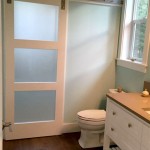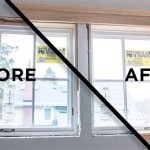Interior Painting Before and After: A Visual Transformation
Interior painting represents a powerful tool for homeowners seeking to revitalize their living spaces. A fresh coat of paint can dramatically alter the atmosphere of a room, impacting mood, perceived space, and overall aesthetic appeal. Examining before and after pictures provides tangible evidence of the transformative power of interior painting, illustrating the potential for even relatively simple color changes to yield significant improvements.
The impact of interior painting transcends mere cosmetic enhancement. It addresses practical concerns such as concealing imperfections on walls, offering a protective layer against wear and tear, and even improving air quality when using low-VOC (volatile organic compound) paints. The selection of appropriate paint types, colors, and finishes plays a crucial role in achieving the desired outcome, making careful planning an essential component of any interior painting project.
Before embarking on a painting project, a thorough assessment of the existing conditions is necessary. This includes identifying any damage such as cracks, holes, or water stains that require repair. Surface preparation, involving cleaning, sanding, and priming, is equally critical to ensure proper adhesion and a smooth, even finish. These preparatory steps, although often overlooked, contribute significantly to the overall success and longevity of the paint job. The before and after comparison highlights the extent to which proper preparation influences the final outcome.
The Role of Color in Interior Transformation
Color psychology dictates that different colors evoke distinct emotional responses. Understanding these associations allows homeowners to strategically utilize color to create the desired ambiance in each room. For instance, cool colors like blues and greens tend to promote a sense of calmness and serenity, making them suitable for bedrooms and bathrooms. Warm colors such as reds, oranges, and yellows, on the other hand, can stimulate energy and appetite, often employed in kitchens and dining areas. Neutral tones, including whites, grays, and beiges, offer versatility and can serve as a blank canvas for showcasing furniture and decor.
Before and after images often reveal how a change in color palette can completely transform the character of a room. A dark, outdated color can be replaced with a lighter, more contemporary shade, instantly brightening the space and making it feel more open and inviting. Conversely, a neutral room can gain personality and depth through the addition of an accent wall painted in a bold, vibrant hue. The strategic use of color can also be employed to visually alter the proportions of a room, making a small space appear larger or a long, narrow room feel more balanced.
The selection of color should also take into account the existing lighting conditions within the room. Natural light can significantly influence how a color appears, while artificial light, particularly incandescent or fluorescent, can alter the undertones. It is advisable to test paint samples under different lighting conditions before committing to a particular color. This proactive approach helps to minimize the risk of disappointment and ensures that the chosen color complements the room's inherent characteristics.
Surface Preparation: The Foundation of a Flawless Finish
The quality of the final paint job is directly proportional to the thoroughness of the surface preparation. Without proper preparation, imperfections will be amplified, and the paint may not adhere correctly, leading to peeling, chipping, or an uneven appearance. This phase involves several key steps, each contributing to the creation of a smooth, receptive surface for the paint to adhere to.
The initial step involves cleaning the walls to remove dirt, dust, grease, and any other contaminants that may hinder adhesion. A mild detergent solution is typically sufficient for this purpose, followed by a thorough rinsing with clean water. For areas with stubborn stains or mildew, a specialized cleaning solution may be required. Allow the walls to dry completely before proceeding to the next step.
Next, any imperfections such as cracks, holes, or dents should be addressed. Small cracks can be filled with spackle or joint compound, while larger holes may require the use of patching plaster. After the filler has dried, sand the area smooth to blend it seamlessly with the surrounding surface. This step is crucial for achieving a uniform finish and preventing the imperfections from becoming visible through the paint. Sanding also removes any loose paint or debris, further improving adhesion.
Priming is the final step in surface preparation. Primer serves as a bonding agent, creating a uniform surface for the paint to adhere to. It also helps to seal porous surfaces, preventing them from absorbing too much paint. In addition, primer can block stains and prevent them from bleeding through the topcoat. The choice of primer should be appropriate for the type of paint being used and the condition of the surface. Before and after pictures demonstrate the dramatic difference a properly primed surface makes in the final appearance of the painted wall.
Paint Types, Finishes, and Their Impact
The selection of paint type and finish is another critical factor influencing the outcome of an interior painting project. Different paint types offer varying levels of durability, washability, and sheen, making them suitable for different areas of the home. Similarly, different finishes affect the appearance of the color and the overall look of the room.
Latex paint is the most common choice for interior walls due to its ease of application, low odor, and water-based cleanup. It is available in a wide range of colors and finishes and is suitable for most surfaces. Oil-based paint, while more durable than latex paint, has a longer drying time, a stronger odor, and requires mineral spirits for cleanup. It is typically reserved for trim and doors, where a hard, glossy finish is desired.
The choice of finish impacts both the appearance and the functionality of the painted surface. Flat or matte finishes have the lowest sheen and provide excellent color hiding. They are ideal for ceilings and low-traffic areas where durability is not a primary concern. Eggshell and satin finishes have a slightly higher sheen and are more durable and washable than flat finishes. They are suitable for living rooms, bedrooms, and hallways. Semi-gloss and gloss finishes have the highest sheen and are the most durable and washable. They are commonly used in kitchens, bathrooms, and on trim and doors where frequent cleaning is required.
Before and after comparisons clearly show how the texture and sheen of a paint finish can alter the perceived depth and dimension of a room. A high-gloss finish can reflect light and make a small room appear larger, while a matte finish can absorb light and create a cozy, intimate atmosphere. The choice of finish should be carefully considered based on the desired effect and the specific needs of the space.
The transformative effect of interior painting, as evidenced by before and after pictures, extends far beyond mere aesthetics. It provides an opportunity to personalize living spaces, enhance their functionality, and create an environment that reflects the homeowner's individual style and preferences. The careful consideration of color, surface preparation, and paint type and finish, combined with meticulous execution, ensures a successful and long-lasting result.

15 Before And After Photos That Prove The Power Of A Coat Paint

Interior Painting Ideas Project Gallery

How To Paint Your Home Interior Independent

Interior Painting Ideas Project Gallery

Interior Painting Ideas Project Gallery

Interior Painting Color Updating Westfield In Legacy

Interior Painting Services Houston

Benefits Of Painting Your Kitchen Cabinets George Apap

Interior Before And After 7 Everett Painting Interiors Exteriors Trim

Interior Painting Pics From A Recent Job In Lakewood Il
Related Posts








